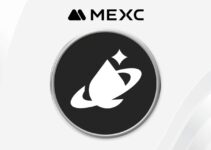In the rapidly evolving landscape of decentralized finance (DeFi), security and transparency stand as twin pillars, crucial for building trust and ensuring the integrity of the financial ecosystem. As users increasingly embrace decentralized platforms and protocols, understanding the nuances of security and transparency becomes paramount for safeguarding assets and fostering the continued growth of DeFi.

Security in DeFi: Fortifying Digital Fortresses
1. Smart Contract Audits
Smart contracts are the backbone of DeFi applications, facilitating transactions and executing code automatically. To mitigate risks associated with vulnerabilities, projects often undergo comprehensive smart contract audits conducted by third-party security firms. These audits help identify and rectify potential weaknesses before a protocol is deployed.
2. Decentralized Autonomous Organizations (DAOs)
Many DeFi projects operate as DAOs, allowing users to participate in governance decisions. However, the governance structure must be carefully designed to prevent malicious activities. Security measures, such as multisig wallets and timelocks, are implemented to safeguard against unauthorized actions.
3. White-Hat Hacking and Bug Bounties
Some DeFi projects actively encourage ethical hacking by organizing bug bounty programs. White-hat hackers are incentivized to discover and report vulnerabilities, promoting a proactive approach to security. This collaborative effort helps identify and rectify potential threats before they can be exploited.
4. Insurance Protocols
Recognizing the inherent risks in DeFi, insurance protocols have emerged to provide coverage against smart contract exploits and other vulnerabilities. Users can opt to insure their deposits, adding an extra layer of protection against unforeseen events.
Transparency: Illuminating the Inner Workings
1. On-Chain Auditing
One of the defining features of DeFi is its transparency through on-chain data. Participants can verify transactions and protocol activity directly on the blockchain. This transparency fosters accountability and builds trust among users who can independently audit the protocol’s activities.
2. Open-Source Code
DeFi projects often make their code open-source, allowing anyone to review and contribute. This transparency ensures that the community can scrutinize the code for security vulnerabilities and confirm that the project aligns with its stated goals. Open-source practices also encourage collaborative development and innovation.
3. Immutable Transaction History
All transactions on a blockchain are immutable, meaning they cannot be altered once confirmed. This immutable ledger ensures a transparent and tamper-resistant transaction history. Users can trace the flow of funds, providing visibility into the financial activities of a DeFi protocol.
4. Tokenomics and Governance
Transparent tokenomics, detailing the distribution and use of tokens within a protocol, contributes to overall transparency. Governance decisions, often executed through voting mechanisms, are transparent processes that empower the community to influence the direction of a project.
Challenges and Evolving Landscape
Despite the strides made in enhancing security and transparency in DeFi, challenges persist. Scalability issues, regulatory uncertainties, and the evolving nature of blockchain technology present ongoing hurdles. Additionally, the community continually grapples with striking the right balance between privacy and transparency.
Looking Ahead
As DeFi matures, the emphasis on security and transparency is likely to intensify. The industry may witness the integration of advanced cryptographic techniques, privacy solutions, and improved consensus mechanisms to address existing challenges. Regulatory developments will also play a pivotal role in shaping the future of decentralized finance.
In conclusion, security and transparency are foundational principles that underpin the trust users place in decentralized finance. Through rigorous security measures, transparent on-chain data, and community-driven governance, DeFi strives to create a financial landscape that is not only robust and secure but also accessible and accountable. As the decentralized finance space continues to evolve, the industry’s commitment to fortifying digital fortresses and illuminating the inner workings will be instrumental in realizing the full potential of decentralized finance.
Personal Note From MEXC Team
Check out our MEXC trading page and find out what we have to offer! There are also a ton of interesting articles to get you up to speed with the crypto world. Lastly, join our MEXC Creators project and share your opinion about everything crypto! Happy trading! Learn about interoperability now!
Join MEXC and Start Trading Today!


